| We caught a combi bus from the camp site about 3km to
the town centre. These are Volkswagen, Nissan or Toyota 'minibuses' carrying
a maximum of a dozen people and run
about every 5 minutes on many routes between the towns and the local villages.
The cost is between five and six pesos per journey (about 30p).
The town is regarded as one of the best small colonial towns and is seen
as quite an architectural jewel. It was the regional capital for the Tarascans
from 1325 to 1400 AD. The Spaniards didn't arrive until 1529 in the person of Nuño de Guzmán,
a vicious thug who was subsequently recalled and Bishop Quiroga sent to clean up the mess.
This is the Santuario de Guadalupe, a neoclassical temple built in the
19th century. | 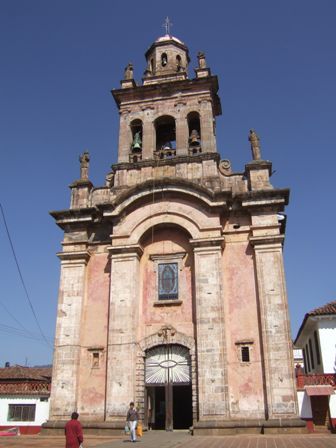 |
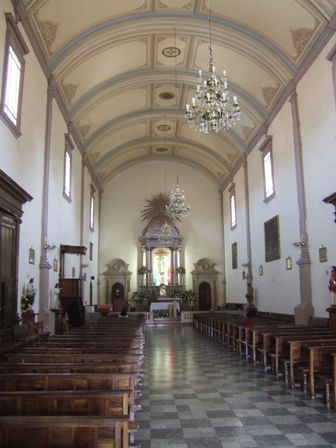 |
By the standards of churches here, this is fairly plain. Perhaps it is
because this is the centre of the Purépecha people and Mexico's
indigenous peoples (who make up some 30% of the population) are not the
wealthiest group. We have noticed that temples in the indigenous people's
areas tend to be simpler. |
| Mexico is essentially a Catholic country, but their Catholicism is mixed with animistic elements from their indigenous beliefs.
Still their altar looks impressive enough. | 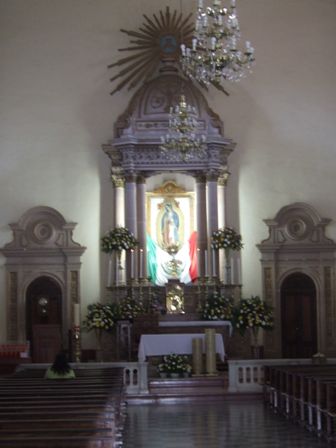 |
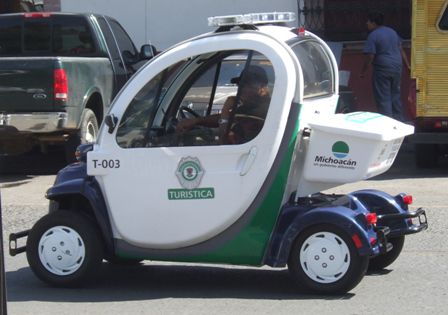 |
We've seen these little electric cars elsewhere in the world. They always
seem to be used by the tourist police. Very eco-friendly, and Mexico is
becoming quite eco-aware. Most public places use low energy light bulbs for
example. |
| This is less common. Circuses are increasingly rare
and ones that still employ animals even more so. This was advertising a
circus in the area. Boletos de preventa are advance tickets - stop me and
buy one I guess. The kids just loved the lion. | 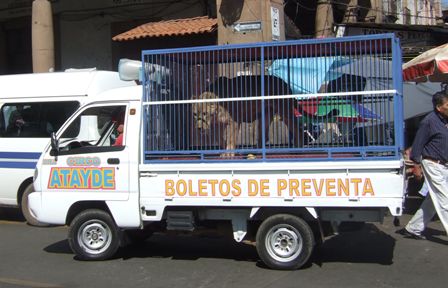 |
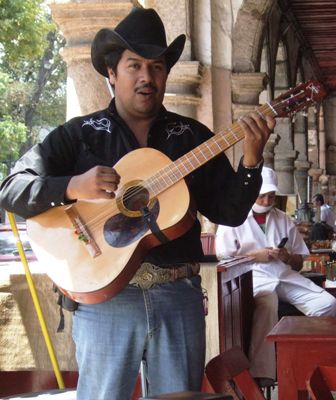 |
We don't usually encourage the wandering musicians but Jan has a soft spot
for an acoustic guitar and this guy wasn't bad to listen to as we had a
coffee at a pavement cafe. I wouldn't want a CD though. |
| One of our reasons for going into town was to visit
an HSBC bank and get some more pesos. It turned out to be far more
complicated than we'd thought and involved international three way telephone
conversations in two languages and a money transfer via dollars. There were
much easier ways to do it we discovered afterwards. However this was the
bank lady's calendar (with days etc in Spanish) - no clue who they are or where it was
taken, but I bet we have friends who can tell us. We were
highly amused! | 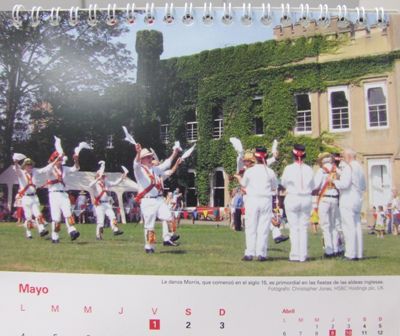 |
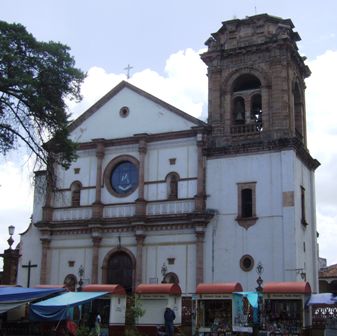 | This is Pátzcuaro's most important church and is
called the Basilica. It was commissioned by Don Vasco de Quiroga, whose
remains are buried here. He was the first bishop of Michoacán and ordered
the temple to be built on top of a pre-Hispanic ceremonial site. It houses a
statue of Our Lady of Health who is a patron of the region. 16th
century Tarascans crafted her image using a maize plant and honey paste.
The resulting material is both light weight (useful when carrying statues
through the streets during festivals) and amazingly durable. Pilgrims come here from all over Mexico to be healed. |
|
The stained glass in the Basilica is interesting because the
pictures are of Spanish conquistadors. We don't think that the past actions
of the English abroad accrue much credit, and the French are even worse, but
both pale in comparison with the Spaniards. | 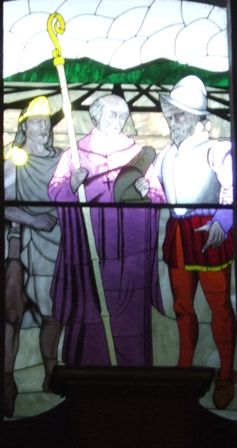 |
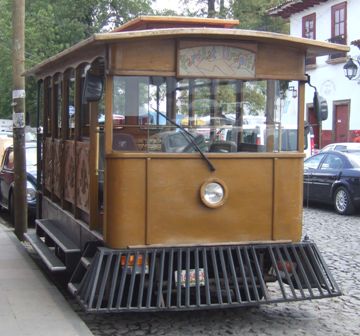 |
This is obviously a tourist town with many of the tourist trappings. It's
just that there aren't many tourists around at the moment. Some of these are
made up to look like trains but this one is definitely Duck the tram. |
| The construction of El Sagrario church was started in
1693 but was not finished until two centuries later. It is another church with an ornate altar. Perhaps it is a
Catholic thing to illuminate it although it doesn't seem to be the case in
all churches. | 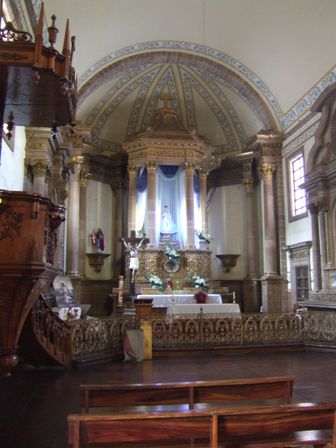 |
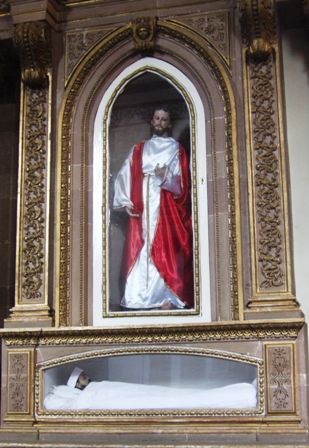 |
Statues of apostles and saints I can understand but I'm not sure who
the one underneath is. I guess I'm just not religious enough even to be
curious. |
| The facades of many of the buildings are very dull and
lead one to suppose that they are poor and run down. But occasionally an
open gateway leads to a courtyard where the inside is much more ornate and
in much better condition. | 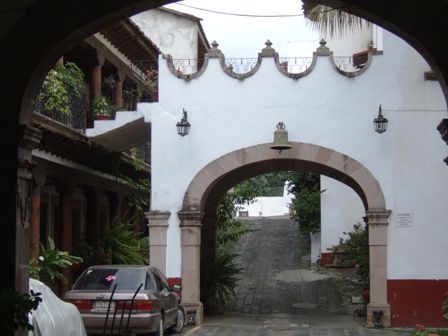 |
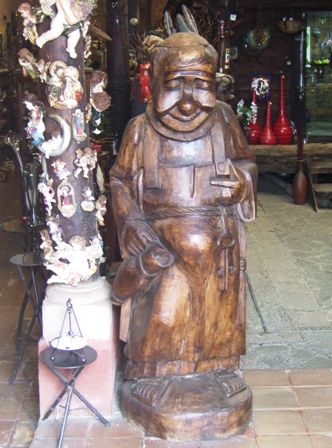 |
There are lots of little tourist shops (doing dire business). This gnome
was one of several carved out of solid blocks of hardwood and all at least
five feet high. About 10,000 pesos (£500) each - but how would we get them
home..... |
| One of the places to visit is La Casa de los Once
Patios (House of Eleven Courtyards). This is a wondrous complex occupied by small
artisan workshops (and mostly closed). It used to be the convent of the
Dominican nuns of Santa Catalina in 1740. | 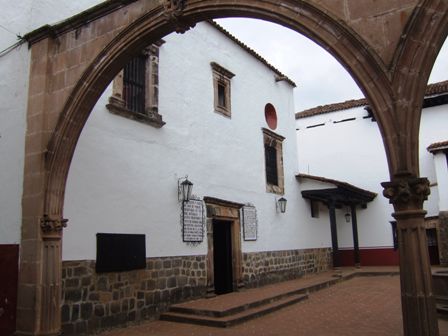 |
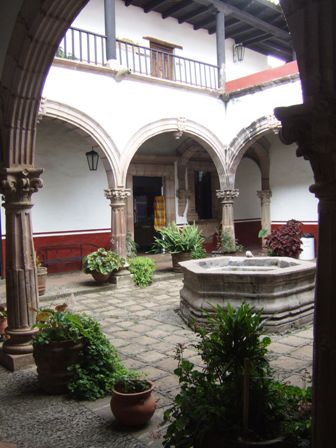 |
One of the more charming courtyards. We did look in a number of the shops
but only bought a small lacquered box, a craft style specific to Pátzcuaro
itself. |
| This was one of the main entrances leading on to a
bricked courtyard. | 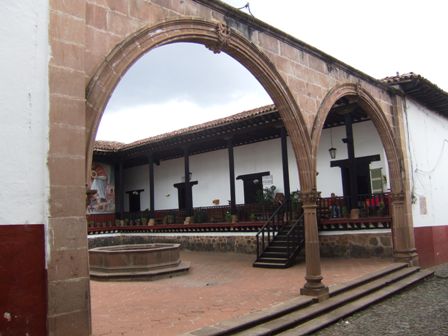 |
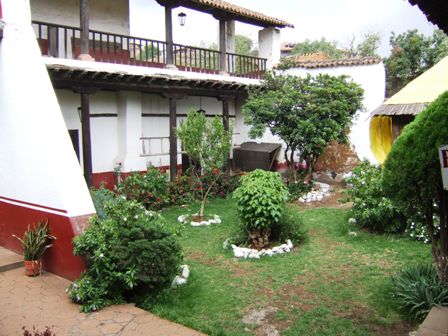 |
But further inside the courtyards were more like gardens although suffering now
from the lack of rain. Having said that, it did rain while we were in here. |
| The overhanging roof lines match those on the
outside where they overhang the pavements so that the rain falls into the
road. The pavements are quite high so that the road will channel the water
away in the rainy season. | 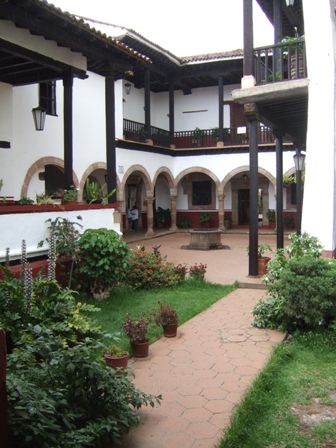 |
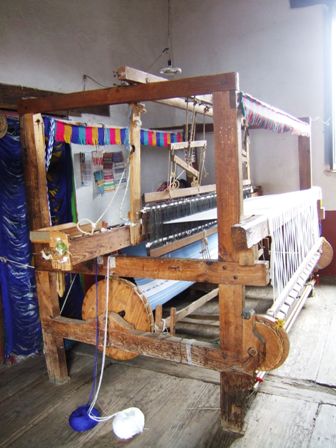 |
This is a home for crafts of all types so it was only natural that we would
find a loom. This however is a modern reproduction. I wondered if the
Spanish allowed Mexico to build its own looms or if it insisted that they
buy from Spain as the English did with the American colonies. |
|